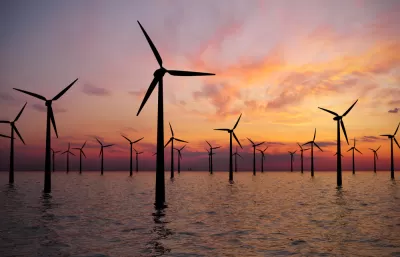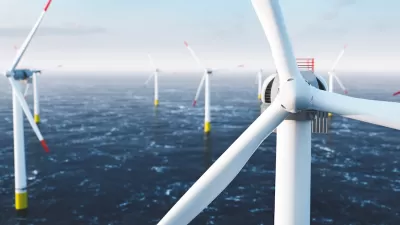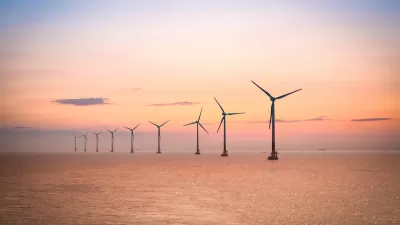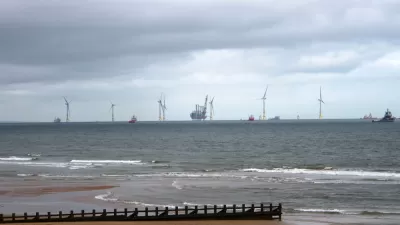States traditionally resistant to renewable energy are passing legislation to ease the way for offshore wind production as lawmakers realize the potential economic benefits to their states.

“The offshore wind industry, which produces little electricity today, is poised to grow exponentially in the coming years as long-awaited projects come online, and more waters are opened for leasing,” writes Alex Brown in Governing. While some states mandate certain amounts of offshore wind energy, Schulman writes, others have been reluctant to do so. Now, with the economic benefits of offshore wind becoming more apparent, some state legislators are hoping their states can cash in.
On the East Coast, “Eight states set goals or mandates that total 39 gigawatts of capacity by 2040. Many have invested in ports, workforce development, transmission infrastructure and manufacturing sectors.”
The article outlines recently passed or proposed laws that support offshore wind production, such as a Massachusetts bill that would establish an investment fund and a Maryland law that streamlines the process for renewable energy credits. On the West Coast, “Federal officials are expected to hold the first offshore wind lease sale in California waters this fall, and state regulators there have twice voted to allow the lease phase of projects to move forward.”
Even in the South, where energy interests have largely suppressed the development of renewable energy infrastructure, lawmakers hope to reverse that trend. “Louisiana legislators, for example, passed a law this year to allow for leasing of state waters in the Gulf of Mexico for offshore wind projects.”
FULL STORY: More States Back Offshore Wind, Citing Economic Potential

Maui's Vacation Rental Debate Turns Ugly
Verbal attacks, misinformation campaigns and fistfights plague a high-stakes debate to convert thousands of vacation rentals into long-term housing.

Planetizen Federal Action Tracker
A weekly monitor of how Trump’s orders and actions are impacting planners and planning in America.

In Urban Planning, AI Prompting Could be the New Design Thinking
Creativity has long been key to great urban design. What if we see AI as our new creative partner?

How Trump's HUD Budget Proposal Would Harm Homelessness Response
Experts say the change to the HUD budget would make it more difficult to identify people who are homeless and connect them with services, and to prevent homelessness.

The Vast Potential of the Right-of-Way
One writer argues that the space between two building faces is the most important element of the built environment.

Florida Seniors Face Rising Homelessness Risk
High housing costs are pushing more seniors, many of them on a fixed income, into homelessness.
Urban Design for Planners 1: Software Tools
This six-course series explores essential urban design concepts using open source software and equips planners with the tools they need to participate fully in the urban design process.
Planning for Universal Design
Learn the tools for implementing Universal Design in planning regulations.
Gallatin County Department of Planning & Community Development
Heyer Gruel & Associates PA
JM Goldson LLC
City of Camden Redevelopment Agency
City of Astoria
Transportation Research & Education Center (TREC) at Portland State University
Jefferson Parish Government
Camden Redevelopment Agency
City of Claremont





























